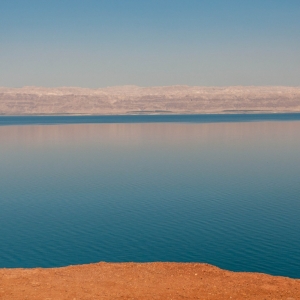Federal Water Tap, April 12: Intelligence Agencies Deliver Warning About Climate Disruption. Again.
The Rundown
The nation’s intelligence agencies identify environmental change as a driver of political and social instability. Federal agencies sign an agreement regarding a drinking water project for the Navajo Nation and other communities in the Southwest. Two key variables in the Colorado River basin runoff forecast are below normal. And lastly, budget season kicks off with the president’s $1.5 trillion request for discretionary spending.
“Today’s discussion highlighted that local leaders need a stronger federal partner when it comes to water infrastructure.” — Michael Regan, the EPA administrator, following a discussion with local water utility representatives. Regan is one of the administration deputies who is stumping for President Biden’s infrastructure proposal, which includes at least $111 billion for water systems.
In context: Michigan’s Rural Water Systems Confront Generations of Inadequate Investment
By the Numbers
$717 million: Funding for fiscal year 2022 that President Biden requested for the U.S. Department of Agriculture’s rural water and wastewater loan and grant program. It would be $100 million above the current level.
News Briefs
Global Security Trends
U.S. intelligence agencies once again acknowledged that environmental change leads to social and political instability, warning of the risk in its periodic report on global security threats over the next two decades.
“The effects of climate change and environmental degradation are likely to exacerbate food and water insecurity for poor countries, increase migration, precipitate new health challenges, and contribute to biodiversity losses,” the report stated.
Poorer countries will bear the heaviest burden, and poor governance will worsen water stress. The report calls out dam building in the Nile basin, sewage and industrial pollution of rivers, and waterborne pathogens.
The report argues that responding to these threats requires adaptation, which will be easier for countries with high levels of public trust that can marshal the forces of civil society. Pressure to respond can inflame political tensions, both from those who want to cut carbon pollution and those who prefer the status quo.
Since 1997, the report has been prepared for each incoming or returning presidential administration. This is the report’s seventh edition.
If the warnings sound familiar, it’s because they are. The intelligence agencies have sounded these alarms for at least a decade.
The 2011 worldwide threat assessment noted that:
“In the absence of mitigating action, fresh water scarcity at local levels will have wide-ranging implications for US national security. This scarcity will aggravate existing problems—such as poverty, social tensions, environmental degradation, ineffectual leadership, and weak political institutions—and thereby threaten state or regional stability.”
Studies and Reports
Colorado River Basin Forecast
The Colorado River basin sits in an inauspicious position. Heading into the snowmelt season, soils in the seven-state watershed are near record lows and precipitation is below average.
Cody Moser, a hydrologist with the Colorado Basin River Forecast Center said that the biggest impact to water supplies occurs when those two variables coincide, either positively or negatively. This year, both are in the negative.
In context: Southwest Braces for Cutbacks as Drought Deepens along Colorado River
On the Radar
Budget Season
Now that the president has submitted his $1.5 trillion budget request, Congress is beginning hearings to determine which programs get funding and how much.
Congressional Hearings
- April 14, the Senate Intelligence Committee will discuss the global threat assessment.
- April 15, the House Committee on Energy and Commerce will discuss environmental justice legislation, including the CLEAN Future Act, a renewable energy and climate bill.
- April 15, the Senate Budget Committee will hold a hearing on the financial costs of climate change.
- April 15, in a topically related event, the House Select Committee on the Climate Crisis will discuss the case for action on climate change.
- April 15, the House Appropriations Committee will hold a hearing on NOAA’s climate services.
Navajo-Gallup Agreement
Federal, state, and tribal agencies signed an agreement over the Navajo-Gallup water supply project.
The agreement sets out regulatory and oversight duties for the drinking water system that will supply the eastern half of the Navajo Nation, as well as the Jicarilla Apache Nation and the town of Gallup, New Mexico.
Congress set a deadline of December 31, 2024, to complete the project but the timetable is now 2027. The project, with an initial cost of nearly $1 billion, is expected to serve about 250,000 people by 2040.
Federal Water Tap is a weekly digest spotting trends in U.S. government water policy. To get more water news, follow Circle of Blue on Twitter and sign up for our newsletter.
Brett writes about agriculture, energy, infrastructure, and the politics and economics of water in the United States. He also writes the Federal Water Tap, Circle of Blue’s weekly digest of U.S. government water news. He is the winner of two Society of Environmental Journalists reporting awards, one of the top honors in American environmental journalism: first place for explanatory reporting for a series on septic system pollution in the United States(2016) and third place for beat reporting in a small market (2014). He received the Sierra Club’s Distinguished Service Award in 2018. Brett lives in Seattle, where he hikes the mountains and bakes pies. Contact Brett Walton





Leave a Reply
Want to join the discussion?Feel free to contribute!